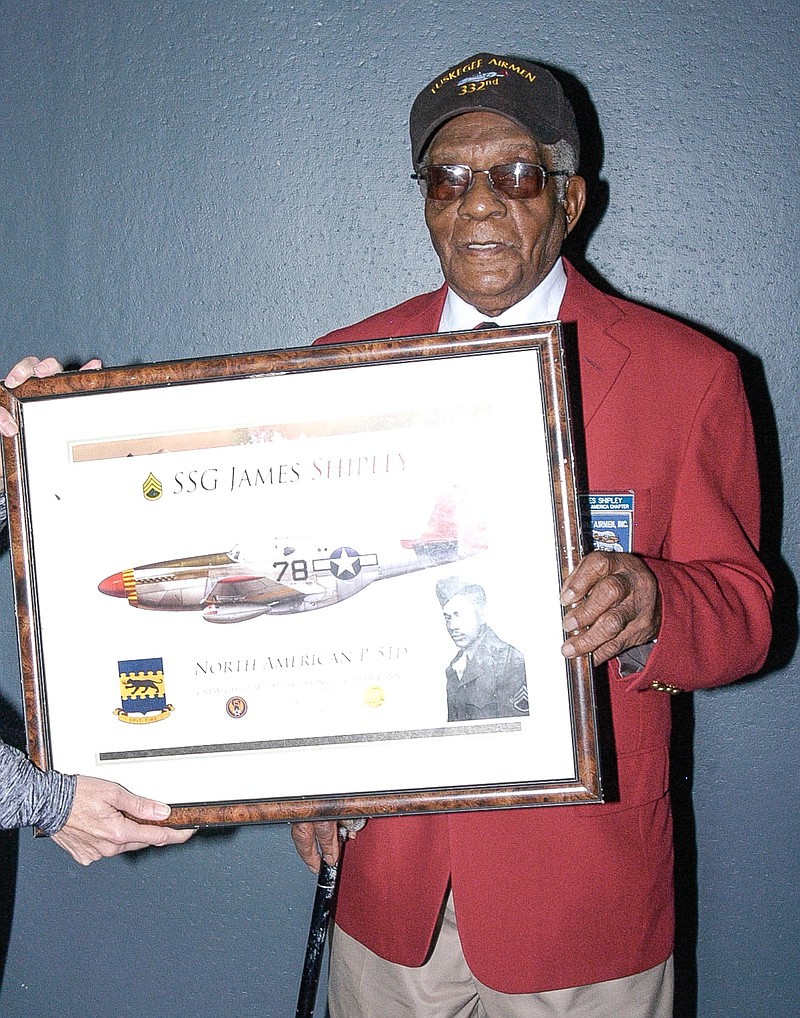World War II veteran James Shipley spoke Nov. 13 at the Veterans Day Assembly at California High School. The audience included about two dozen veterans, as well as the school students.
Shipley, a Tipton native, is 94 and served with the Tuskegee Airmen.
Shipley talked of being trained as a mechanic in the Studebaker garage, owned by Paul Miller in Tipton. Shipley said he went to see if he would pass the physical to get into the U.S. Army. He passed, going on to join the all-black Army Air Corps group being formed, known as the Tuskegee Airmen, as a mechanic. He discussed the rigorous basic training, then the training as an aircraft mechanic.
"We had a time getting placed because we were an all-black outfit. They didn't think we could fly," he said. Then an important visitor to their training base changed all that.
First Lady Eleanor Roosevelt came to the airfield to see how the unit was progressing. "She said, 'I believe I want to go up and fly,' and one of the younger white instructors said, 'OK, I'll take you up.' She said, 'No, I want to go with that guy that just landed.' That was a black guy. She went up with him and when she came back down she said, 'They're ready.'"
A short time after that, the outfit was sent to Ramitelli, Italy. At first, they flew on harbor patrol and flights like that, seeing little action. When they were assigned to escort bombers on their runs to Europe, they were recognized for how good they were. The action picked up, as the bomber pilots began requesting the "Red Tails" as fighter escorts.
He said the longest flight was non-stop to Berlin, to escort bombers to their target of a Daimler-Benz tank factory. That required extra fuel tanks for the P-51 Mustang aircraft they were flying. That meant they had to find the extra fuel tanks, mount them and fill them with fuel, in a very limited time. They found fuel tanks, which were going someplace else, but managed to get them for their planes.
Staff Sgt. Shipley was a mechanic on six different types of planes and received a number of awards and medals. He was with the 99th Squadron. The other three squadrons were the 100th, 301st and 302nd. After he got out of the Army, Shipley eventually went to work as a mechanic for Co-Mo Electric from 1957 to his retirement in 1986.
Elizabeth Lutz and Cole Pettigrew served as emcees of the event, which began with a video on the real story behind the writing of the Star-Spangled Banner by Frances Scott Key.
Key was on a ship to arrange for a trade of prisoners, when the British commander told him the British war ships were all coming to destroy Fort McHenry, expecting the Americans to surrender. The flag and flagpole was held up during the battle by soldiers, many of whom died. The British commander was said to have been told that the Americans would rather "die standing than live kneeling."
The VFW essay of Cole Schlup was selected by the teachers to be read to the assembled students. Each military branch flag was presented, followed by presentation of the Missouri State flag and the U.S. flag. Michele Bilyeu directed the Sounds of Joy in its performance of the national anthem. This was followed by the mixed choir and the high school band. The event ended with the playing of "Taps."

